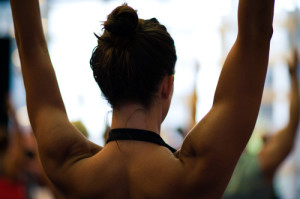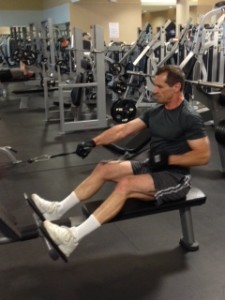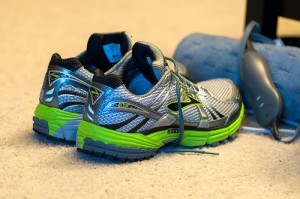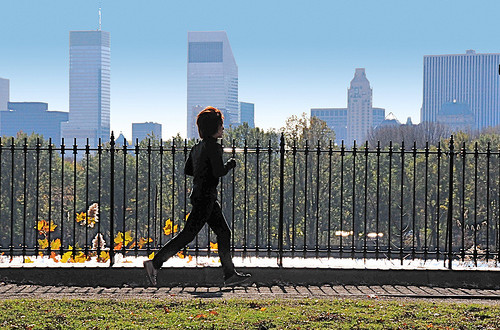by Michelle Sutton-Kerchner
As a chill creeps into the air, summer-warm muscles become a little stiffer. The floor drifts farther away as we try to do a toe-touch. That neck ache is back from vacation. Everyday discomforts are part of life. Ease them away …
Prevention
Denial is a great way to stretch the summer into early fall. It remains light outside after dinner, the boardwalk and beach are still alive with visitors, birds and crickets still sing. This lingering makes an easier transition to autumn and all its own joys. Yet, remember to prepare for the seasonal shifts.
During the cooler months, it is essential to prep for any physical activity, especially a workout. A warm-up is vital in chilly weather. Experts recommend doubling the time spent on this phase of your fitness routine once the temps drop.
Going into a workout with muscles and joints stiff from the cold easily leads to pulls and strains. The nights and early mornings flirt with frosty temps, even though fall days reach beautifully into 70 degrees. Start now to make a warm-up routine habit, lest a quick game of pick-up may result in a several day lay-up. Your body is no longer incubating in a heat wave all day.

Increase your heart rate by marching in place, circling arms, and gently twisting the waist. Then, begin stretches on an already warmed body. Some mistakenly go into stretching cold. This can lead to pulls as you tug and stretch at muscles that have not been warmed yet. We tend to hold ourselves stiff in cold weather. Let your body acclimate and loosen with a proper warm-up.
A cool-down is also important. Rushing into the cold air after a sweat session can cause strains, including on the heart (a muscle never to be neglected). Perspiration-soaked clothing against the body exacerbates the situation.
Strengthening
Strength training has received increased attention over the past few years. Researchers are investigating the ways strengthening exercises help eliminate musculoskeletal pain. Stronger muscles are better able to combat everyday tensions and aches. They also provide increased support to joints, which helps prevent injuries common to these areas from overuse, misuse, and daily wear-and-tear. Imagine a firm, solid support system for your bones and joints versus a soft, weak one. A different life lived.

A strength and stretching combo, like that found in Pilates or yoga, helps increase flexibility and elongate muscles while building them. The movements and poses involved help release muscle tension and prevent soreness.
Pulled muscles often result from neighboring muscles not functioning at their peak to assist or stabilize movement. Low back soreness may result from a weak core or glutes. Hamstring issues can be associated with poor hip extension, linked to weak glutes.
Learn where your body holds its tension. Everyone has their “Achilles’ heel.” Work with a personal trainer or Group Fitness instructor to modify your workout to protect that area. Don’t be surprised. The workout will likely target surrounding areas rather than the trouble point itself. The body is an intricately woven masterpiece.
Take Note
Exercisers tend to be closely in tune with their bodies. They recognize even a little twinge, which typically can be ignored. Whether from the adrenaline rush or the determination to advance, sometimes an indication of trouble is wrongfully ignored in quest for the holy grail of fitness. Young, fit women tend to be most guilty of this casual attitude.
Certain symptoms should give you pause, regardless of how commonplace they seem.
Irregular heart beat may be a sign of anything from thyroid to cardiovascular disease. Or, it can be a simple warning to cut back on caffeine. Consider your workout a physical stress test. Any chest fluttering or pains– especially radiating– should be investigated. A pulled pectoral muscle usually will be sore to the touch and improve with ice application. Always be cautious and get immediate medical attention.
Trouble breathing can also be indicative of a more serious issue. If your heart is pounding and you are breathless, it may be more than too much gusto with your kickboxing. Slow it down and seek medical treatment. The Center nurse can monitor your pulse and breathing.
A workout that continuously leaves you breathless, and is accompanied by a dry cough, may be a sign of asthma (reactive airway disorder). Your workout may be the only time this condition makes its presence known, so take heed. Pre-exercise medication can help, along with working out in the Center’s filtered air. Outdoor fitness excursions, with polluted and pollen-ridden air, may trigger or exacerbate this condition.
Excessive weight loss may sound to some as too good to be true. However, a sudden decrease of 10 to 20 pounds or 10 percent of your body weight, in two months or less, may indicate a more serious issue. Unless you maxed out your workout and revamped your diet, this kind of weight loss is a cause for concern. Your physician may want to screen for diabetes. Although excess body weight is linked to this disease, rapid weight loss is sometimes a symptom.
Spotlight on Sore Muscles
Often, a little post-workout soreness the day after a vigorous workout indicates a job well done. When muscles are sore, with bearable pain, it signals their transformation. As you work these same muscles, you will notice a decrease in this achiness. They are getting stronger and adapting to the execution of chosen exercises.

Previous theories advised rest for these aches and pains. New findings indicate a return to exercise is often the best remedy. Rather than avoid your workout, modify it. Experts recommend following a vigorous routine with several days of lighter exercise, or intense exercise that focuses elsewhere. The temporary soreness and swelling as muscles strengthen and develop can be eased through modified activity. With ongoing activity, results are usually more forthcoming as well. Aim for a 30-minute, low-impact, low-intensity workout during these days.
If continuously sore, speak with a personal trainer prior to continuing your workout program. You may need to correct your form or adjust your exercises. Perhaps you need to pace yourself better. A slow, steady approach to any new fitness routine prevents long-term soreness and reduces the intensity of residual aches.
Give Yourself the Treatment
Sleep allows the body to repair, whether from a high-powered meeting or workout. Adequate hydration and a healthy diet also help replenish fuel and eliminate toxins from the body. Indulge in some TLC. Apply ice packs during the first 48 hours to sore spots and moist heat thereafter. Get a gentle massage. Topical analgesics rubbed in the area often help without systemically putting medication into the blood stream.
Physical therapy is an option for those suffering recurrent pain from injury, or needing rehabilitation of a specific area. Chronic weak or aching spots often benefit from this treatment. Occupational therapy improves the strength needed to complete everyday tasks.
Osteopathic manipulation therapy has a high success rate for improving range-of-motion and decreasing musculoskeletal pain. Strategically applied gentle pressure relieves muscle spasms, decreases inflammation, and helps repair connective soft tissue. This soothing process, performed by a doctor of osteopathic medicine, may effectively promote healing when other methods fail.
Chin-ups

Perhaps one of your most important workout moves, keep your chin up! Recent research shows optimistic athletes are less likely to get injured. When they do get hurt, they tend to recover quicker than their doomsday counterparts. Perhaps the optimistic athlete takes to the game with less stress. Tension leaves the body susceptible during physical exertion. Add deep breathing exercises to your warm-up. Make every effort to maintain a winning attitude, even when the scoreboard shows otherwise.
Prioritize prevention. And, for that post-workout ache, never underestimate the power of a relaxing soak in the Center’s spa pool.
Sources
“10 Ways to Treat Musculoskeletal Pain,” by Dennis Thompson Jr. at www.everydayhealth.com.
“Minor Ache or Major Problem? 6 Symptoms Exercisers Should Pay Attention To,” by Jessica Branch at www.fitnessmagazine.com.
“Smart Ways to Soothe Sore Muscles,” by Jennipher Walters at www.sparkpeople.com.
“Why Optimists Get Hurt Less Often,” by Laura Tedesco at www.menshealth.com.
Image Credits
Fall exercise (introductory photo): www.flickr.com/photos/yourdon/3049152556
Arm warm-up: www.flickr.com/photos/lululemonathletica/4884156494
Heating pad: www.flickr.com/photos/bradhoc/6903548766
Chin up: www.flickr.com/photos/monica59/6812323734
 Fitness & Wellness News Your Source for Fitness News, Wellness News, Health News, and Nutrition News!
Fitness & Wellness News Your Source for Fitness News, Wellness News, Health News, and Nutrition News!




